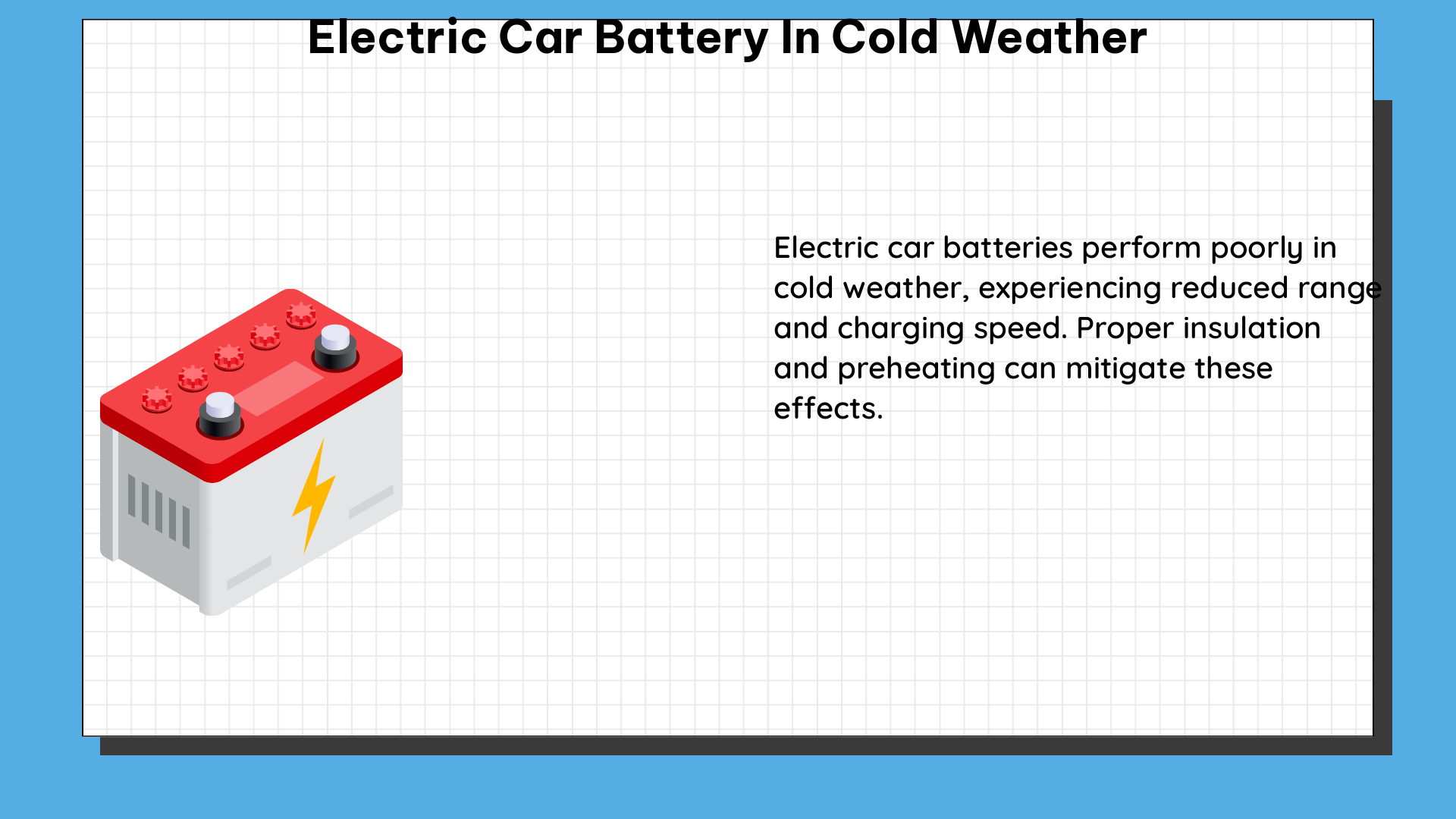Electric vehicles (EVs) have become increasingly popular in recent years, offering a sustainable and eco-friendly alternative to traditional gasoline-powered cars. However, one of the key challenges faced by EV owners is the impact of cold weather on the performance of their vehicle’s battery. In this comprehensive guide, we will delve into the technical details of how cold weather affects electric car batteries and explore strategies to mitigate these challenges.
Understanding the Impact of Cold Weather on Lithium-Ion Batteries
The optimal operating temperature for a lithium-ion car battery is between 20-25°C (68-77°F). When the temperature drops, the battery’s ability to store and release energy is significantly impacted. This is due to the lower ionic conductivity of the battery’s electrolyte at lower temperatures, which reduces the battery’s capacity and power output.
At temperatures below 0°C (32°F), the battery’s chemical reactions slow down, leading to a decrease in the battery’s energy density and a corresponding reduction in the vehicle’s driving range. Studies have shown that the range of an electric vehicle can decrease by 10-12% in 20-degree weather and up to 17% when air conditioning is used in up to 95-degree weather.
Moreover, cold weather can also affect the battery’s chemistry, leading to potential lithium plating and permanent damage to the electrochemistry. This can result in time-consuming charging cycles and the need for additional heat energy to warm the system, further reducing the vehicle’s range.
Factors Affecting Electric Car Battery Performance in Cold Weather

Several factors contribute to the reduced performance of electric car batteries in cold weather, including:
-
Battery Chemistry: The chemical reactions within lithium-ion batteries slow down at lower temperatures, reducing the battery’s ability to store and release energy efficiently.
-
Ionic Conductivity: The ionic conductivity of the battery’s electrolyte decreases at lower temperatures, making it more difficult for ions to move between the anode and cathode, which is essential for the battery’s charging and discharging processes.
-
Battery Capacity: The battery’s capacity, measured in kilowatt-hours (kWh), can decrease by up to 20% in extreme cold conditions, leading to a significant reduction in the vehicle’s driving range.
-
Battery Resistance: The internal resistance of the battery increases in cold weather, which can result in higher energy losses during charging and discharging, further reducing the vehicle’s range.
-
Air Resistance: Cold air is denser than warm air, which increases the vehicle’s air resistance and requires more energy to overcome, leading to a decrease in the vehicle’s overall efficiency.
-
Heating and Cooling Demands: In cold weather, the vehicle’s heating system requires additional energy to warm the cabin, which can further reduce the available energy for propulsion, leading to a decrease in the vehicle’s range.
Strategies to Improve Electric Car Battery Performance in Cold Weather
To mitigate the impact of cold weather on electric car battery performance, several strategies can be employed:
1. Battery Preconditioning
One of the most effective ways to improve battery performance in cold weather is to use a battery preconditioning system. These systems draw power from the charging infrastructure to maintain the battery at an optimal temperature, reducing heat loss and improving the battery’s ability to store and release energy efficiently.
2. Thermal Management Systems
Advanced thermal management systems can help regulate the battery’s temperature, ensuring that it operates within the optimal range. These systems may include active cooling, heating, or a combination of both, depending on the environmental conditions.
3. Insulation and Heating
Proper insulation of the battery pack and the use of efficient heating systems can help maintain the battery’s temperature, reducing the energy required for cabin heating and improving the overall efficiency of the vehicle.
4. Battery Chemistry Optimization
Ongoing research and development in battery chemistry can lead to the creation of lithium-ion batteries that are more resilient to cold weather conditions. This may involve the use of different electrolyte compositions or the incorporation of additives that enhance the battery’s performance in low temperatures.
5. Driving Optimization
Drivers can also take steps to optimize their driving behavior in cold weather to improve the battery’s performance. This may include:
- Minimizing the use of high-power accessories, such as heated seats and steering wheels, to conserve battery energy.
- Preheating the vehicle while it’s still plugged in to the charging station, allowing the battery to reach an optimal temperature before driving.
- Adjusting driving style to reduce energy consumption, such as gentle acceleration and braking, and maintaining a consistent speed.
6. Battery Capacity and Charging Considerations
In cold weather, it’s important to consider the battery’s capacity and charging requirements. Drivers may need to plan their trips more carefully, accounting for the reduced range and the need for more frequent charging. Additionally, using fast-charging stations can help mitigate the impact of cold weather on the battery’s charging time and efficiency.
Conclusion
The performance of electric car batteries in cold weather is a critical consideration for EV owners and fleet operators. By understanding the technical details of how cold weather affects battery performance and implementing strategies to mitigate these challenges, EV owners can ensure their vehicles continue to provide reliable and efficient transportation, even in the harshest of winter conditions.
References:
- How Does Cold Weather Affect Electric Vehicles?
- How to Improve EV Battery Performance in Cold Weather
- The impact of ambient temperature on electric vehicle energy consumption and range
- The Effect of Cold Weather on Electric Vehicle Range
- Lithium-Ion Battery Performance at Low Temperatures
- Thermal Management Strategies for Electric Vehicles in Cold Climates

The lambdageeks.com Core SME Team is a group of experienced subject matter experts from diverse scientific and technical fields including Physics, Chemistry, Technology,Electronics & Electrical Engineering, Automotive, Mechanical Engineering. Our team collaborates to create high-quality, well-researched articles on a wide range of science and technology topics for the lambdageeks.com website.
All Our Senior SME are having more than 7 Years of experience in the respective fields . They are either Working Industry Professionals or assocaited With different Universities. Refer Our Authors Page to get to know About our Core SMEs.